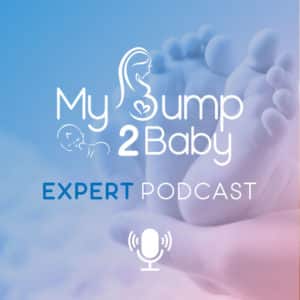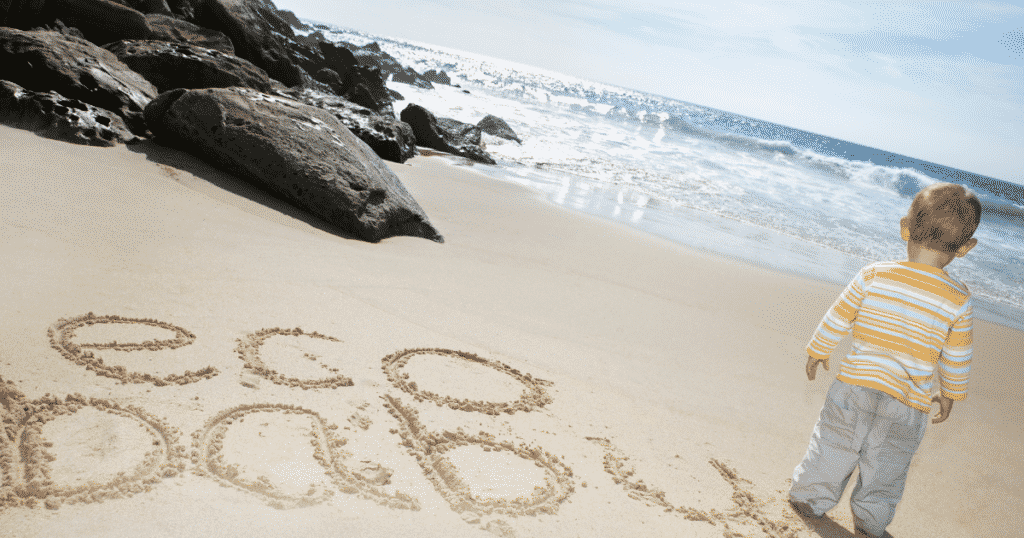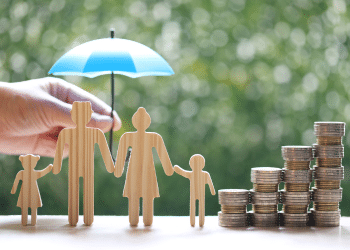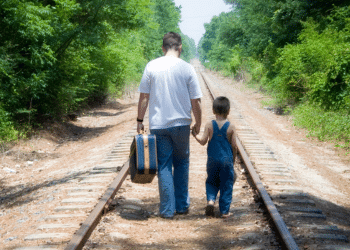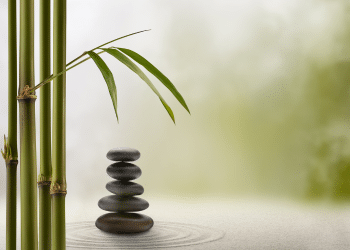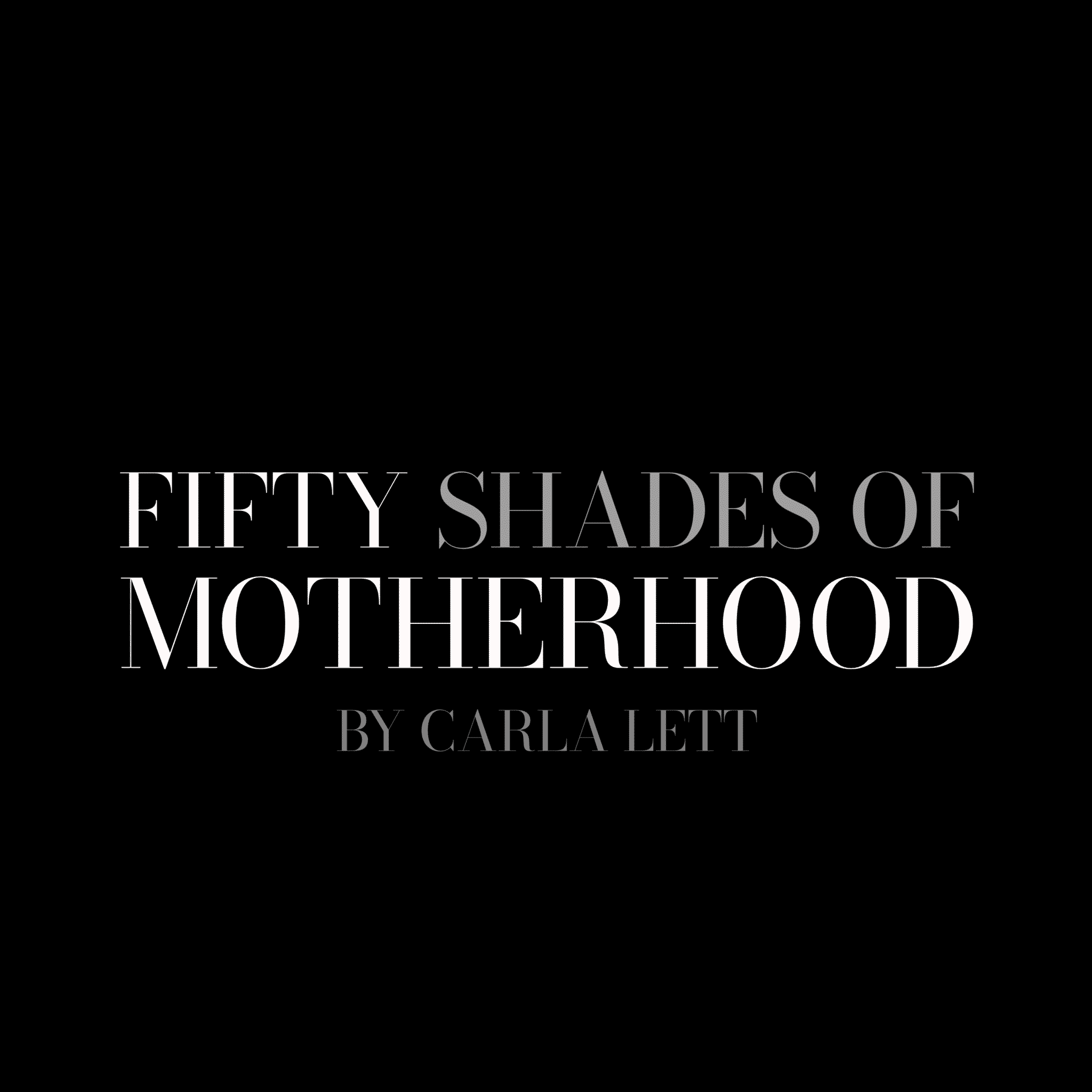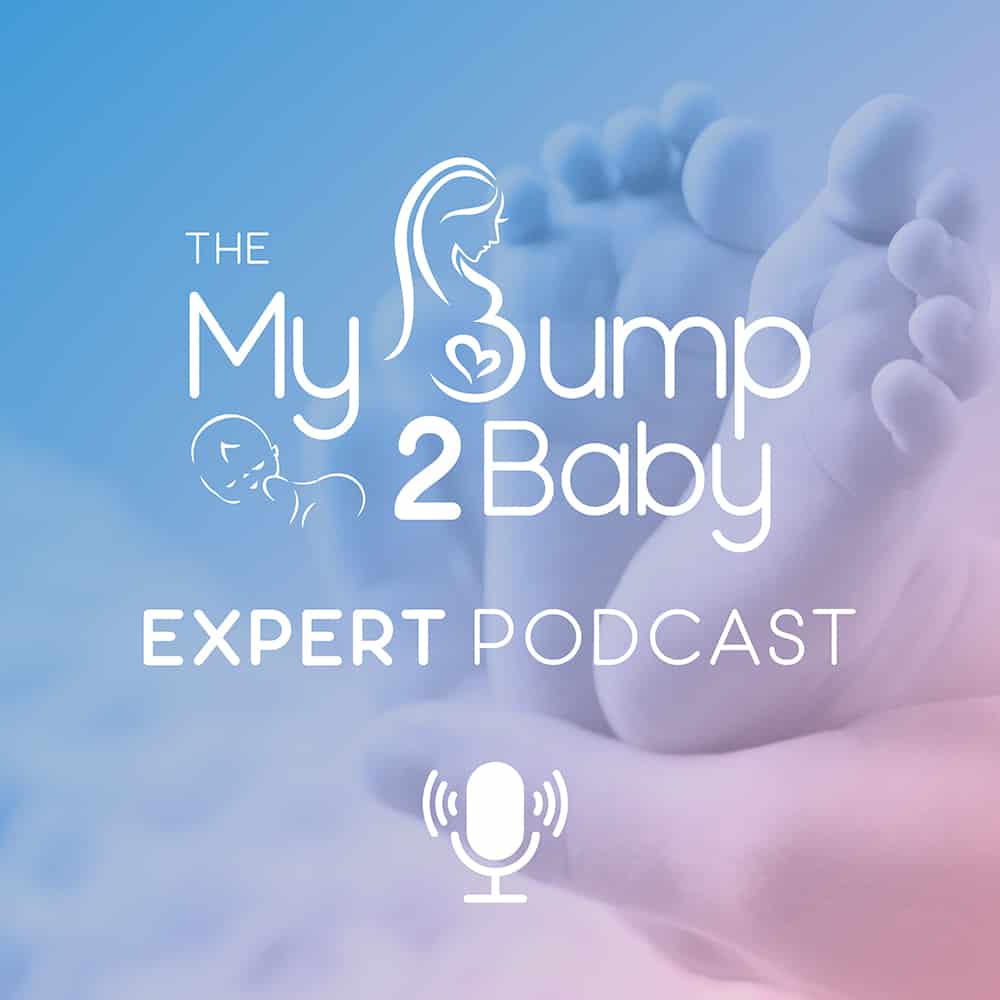- Eco Choices for Baby and Planet
Today Carla interviews Laura Crawford the owner of popular Eco-friendly nappy brand Mama Bamboo. They discuss why everyone should try to go green? What the eco options are and when does eco really mean eco? Why chose bamboo? How to do Combi nappying with cloth nappies and eco friendly nappies. How using plant based materials helps avoid nappy rash and how using eco wipes and avoiding allergens protects delicate skin.
Find Mama Bamboo Products:
Website: https://www.mamabamboo.com
Amazon : https://www.amazon.co.uk/stores/page/57424E81-3375-48D2-8A12-04B77129E8BC
Carla: This podcast is sponsored by My Bump 2 Baby family protection and legal directory. To find your nearest advisor or family law, solicitor, head over to www.mybump2baby.com/ familyprotectionlegal.
[00:00:21] Do you love the idea of being your own. What about saving money on childcare? Because you can actually work flexibly around your family.
[00:00:33] My Bump 2 Baby is rapidly expanding, and we are looking for people to run their own pregnancy to preschool hubs in their local area. Full training is provided, ongoing mentor support, fantastic regular team incentives. A bonus scheme, uncapped commission, review products for free and review days out too. If you are interested in being the, My Bump 2 Baby manager for your local area, email us [email protected] limited space.
[00:01:28] Hello and welcome to My Bump 2 Baby Expert podcast, where we bring experts from all over the UK. To answer your questions on everything pregnancy to preschool.Today, I am joined by the lovely Laura Crawford from Mama Bamboo. Mama Bamboo offers eco-friendly nappies and wipes. And today we’re going to be talking a bit more about nappy waste, how it affects the environment and how we can make a change today to make a better future for our children. I hope you enjoyed this episode.
[00:02:21] Hello everybody. And welcome to the, My Bump 2 Baby Expert podcast and YouTube video today. We’re recording on YouTube as well. So today we have the founder of Mama Bamboo, Laura Crawford. Hello, Laura, how are you?
[00:02:40] Laura: Im good thank you. Thank you so much for having me on today.
[00:02:43] Carla: No I’m really looking forward to this subject today, we’re going to be talking all about eco eco and saving the planet and the, and the environment aren’t we, Laura. And you can do this through nappies wipes. And obviously that that’s a bit about your business. So Laura, tell us a little bit about Mama Bamboo then.
[00:03:04] Laura: Certainly. Um, so I started Mama Bamboo, uh, just after having my two children, three years ago. Um, and really I started it because I personally didn’t get on very well with reusables at the time, or the nappies that were available off the shelf. Um, and I, I really was looking for an eco option. That was the sustainably produced. And friendly to babies skin, um, and that didn’t leak all the time. Um, so I, uh, in frustration really at what was available, I created the Bamboo compostable nappies. Um, um, it’s been a really interesting three years because actually the eco landscape for nappies has changed. Um, even since my two were little , um, um, there are many more brands available now. Um, the subscription business around nappies has really boomed especially during the COVID years.
[00:04:08] Um, the availability, all, all in one reusables that are actually easier to use than the ones that were available five years ago. Um, so the space has changed immensely and our business has grown within that space. Um, and we now strongly have a really good loyal, subscription-base that use our nappies on a regular basis every month, um, which either use exclusively eco disposables, or combinations of eco disposables, and reusables. Um, and it’s just been fascinating to see that rather rapid change in consumer behaviour. Um, to the point that now 20% of all parents are using eco disposables and reusables, um, which is a huge step forward for the country.
[00:04:59] Carla: That’s amazing. Yeah. I mean, the thing is we do see these things, don’t we about looking after the environment and it’s like, oh yeah, well, I’ll do a little bit. And then it’s like, well, we’re still using a lot of parents. That’s 80% are still using. You know nappies, uh, you know, and it is still damaging the environment and our children. It’s thinking of our children’s future as well. Isn’t it?
[00:05:23] Laura: It is and i think sometimes people don’t understand the extent of their impact on the environment. Um, so one of the facts that kind of staggers most people is the average baby will use six thousand nappies before they are potty trained. Six thousand nappies.
[00:05:44] Carla: My goodness.
[00:05:44] Laura: Um, and this leads to in the UK 3 billion, disposable nappies being used every year.
[00:05:52] Carla: Thats frightening.
[00:05:52] Laura: And then when you throw in wet wipes as well, 11 billion wet wipes get used every year and 90% of them are made of the plastic. You don’t know whats in a nappy , like you, don’t sort of look at your nappy and think. Oh yeah thats clearly plastic, isn’t it.
[00:06:10] You have to really find out the details, but the cover is made of plastic, that the liner is plastic. The chemicals that go into them. And your wet wipes are the same there are plastic sheets, um, no less damaging than a single use carrier bag from the supermarket.
[00:06:27] Carla: Thats frightening. Isn’t it? Because they were almost disguised a little bit. And you know, you wouldn’t ever think, oh, this is plastic. Like you said, and its as damaging
[00:06:39] Laura: Yeah and its damaging and that those 3 billion nappies that go into landfill will sit there for 500 years because they are plastic. Or they’ll be incinerated and produce toxic fumes. Um, and the fact that they actually use 150 mils of crude oil, per nappy produced, which is a staggering amount actually. And that they use Chlorine bleach and that they use latex and PVC, and they’ve got perfumes and lotions in them that are completely unnecessary, and it just happens to be how the nappy industry has developed. Um, but there are alternatives to this. Um, I mean, our nappies don’t use all of those plastics or chemicals, and there are other brands as well.
[00:07:26] Um, Kit and Kin and Eco by Naty are the other two that we often talk about, our 3 brands use mostly plant based materials. Um, we don’t use chlorine. We all have either recyclable, easily recyclable or compostable packaging. Um, Um, and they’re readily available. You don’t really have to hunt for them anymore, the industry has changed. It’s very simple to either find them on a supermarket shelf or sign up for the subscription services.
[00:07:56] Carla: Yeah.
[00:07:56]Laura: And I think that that’s a big step forward for parents. I think in the past, whenever we talked about eco nappies and eco wipes everybody’s mind goes to Terri cloth, where a nappy being in the corner of the bathroom, sitting there for days, uh, lots of laundry, hot washes, and then, and then hanging around the house drying. But actually the world has moved on.
[00:08:22] Um, and an awful lot of parents now do their eco nappying by choosing eco disposables, and, modern day reusables. Even modern day reusables are not like what our parents had to use. A long time ago, my day.
[00:08:40] Carla: And mine.
[00:08:42] Laura: Um, the last century, anyway, um, the all in one nappies that are available (inaudibe) or the two they are a lot simpler to use than the terry cloth and actually they’re a lot easier to launder than the old terry cloth, um, so I think when we talk about eco nappying now people need to kind of get to know what the new options are on the table. Um, and we encourage an awful lot of parents to combi nappy, which means using both a reusable and an eco disposable. Um, and we’ve found really that that helps somebody, elongate an eco napping journey where maybe if you go purely reusable, it can be a little daunting, especially off the bat day one. A lot of parents will give up or find it too difficult. Um, but not to say that others don’t, I think 6% of parents do actually use purely reusable.
[00:09:46] Carla: Yeah. That’s amazing.
[00:09:50] Laura: By using a combination of the two, we find that more parents can build this into their lifestyle. Easily. That they can manage a few reusables in the day, eco disposables at night, uh, reusables when they are at home and convenient, eco disposables when they are out and about or going to grandmas house. Um, and just it helps parents actually find a solution that works with their lifestyle because our lifestyles are busier these days and we want to encourage parents to get out with their children, go to classes, now that they’re available again.
[00:10:28] Carla: Yeah. Thank goodness.
[00:10:32] Laura: And you know actually finding that combination that works with their lifestyle, um, and choosing the better quality, more natural products that are available.
[00:10:42] Carla: Yeah, I, like you said, with com, doing it, um, combi really, it means that, you know, you actually kind of really helping. No matter, even if it’s a small change, you know, it makes a big difference. Doesn’t it? The amount of nappies, like you said, 6,000 before they’re potty trained, you know, even if you can cut that down, you know?
[00:11:03] Laura: It’s a huge difference isn’t it? Particularly what we often say for combi napping is when your baby’s first born. It’s all a little bit overwhelming, um, best to chose an eco disposable, eco disposable wipes. For the first 6 weeks. You know, your whole life has just woosh, let’s get used to it.
[00:11:26] Carla: Yes.
[00:11:27]Laura: Whats convenient to you. Also when a baby’s newborn, they are very very small, obviously their bottoms are tiny. An awful lot of the modern all in one nappies actually are too big. Um, so you know, the first 6 weeks, exclusively eco disposables, and then don’t go all out like I stupidly did with my child. And it all went a bit Pete Tong.
[00:11:53] Don’t buy 30 reusables straight off the bat buy three. Just three and then on a calm day, when you’re at home, try the reusable. Three nappies, see how it goes, wash them, launder them, get yourself a little routine. Continue using the eco disposables when you’re out and about. And for the rest of the time and overnight. And if you are comfortable, buy another three, elongate how long you can do that, that routine. And then it will be up to you whether you make the full move and decide to use reusable all of the time, or whether you come up with a routine that, that, you know, I like eco disposables at night. But I don’t mind using reusables during the day.
[00:12:43] Carla: Yeah.
[00:12:45] Laura: Or if i have gone on holiday, let’s face it, nobody really wants to be doing reusables in a caravan. You might prefer to use eco disposables for the whole time. Um, you’ll also find sometimes, um, childminders and nurseries, aren’t really keen on reusables and they prefer you use a disposable nappy. Um, so a lot of people ended up kind of doing a bit of both, um,
[00:13:08] And thats really sort of how we elongate somebodies Eco journey, um, uh, and make it convenient for them. Um, I can certainly remember the early days when I stupidly went out and bought myself 30 reusable nappies off the bat. And was you know I’m going to be absolutely perfect. I can remember crying in the corner on certain days it was all just a bit too much. I would have been a lot better off kind of finding my balance.
[00:13:38] Um, and thats really how we encourage a lot of our clients and it makes a huge environmental difference. So for every eco disposable you use, instead of a standard disposable, you save 150ml of crude oil. Um, you save on the chlorine, um, And the nappy itself can break down, it depends which brand you use, but you could have a compostable one or you can use a recyclable one, um, and for, every reusable one you’re obviously saving on any disposable nappy. Which is even better. And the same with wipes, if you can use a reusable almost the same cloth. Perfect. Um, and if you can use a biodegradable or compostable wipe, that’s a huge difference. I don’t know if anybody saw War on Plastic on BBC last year, where they showed the tonnes and tonnes, uh, of wet wipes, plastic wet wipes and just stinking mass that will never degrade its just going to sit their in landfill forever and a day. But any time you can make an eco choice. You are making a huge difference to the environment.
[00:14:55] Carla: Yeah. And like you said, as well, if you can do a mixture of both recyclable as well, you might even find that you save money and do you know and do it that way. So then a bit of a mix is, is another way that you can kind of do it as well.
[00:15:11] Laura: I think one of the things that sometimes put people off using reusable. Is this idea that you’ve got to shell out for 30 or 40 nappies on day one, which is quite expensive it runs to a few hundred pounds before you’ve, even tried it. It is a lot better to buy 3, you know thats probably only going to cost you. £20 or £30.
[00:15:33] Carla: Yeah.
[00:15:33] Laura: Give it a go And then, and then you can build up to it. So you don’t have to, you don’t have to invest so much before you have really given it a try. And equally with the eco disposable nappies. Once you have tried a sort of pack of them and got familiar with which brand you want to use. I think nearly all of the eco disposable use a, a quite a heavy discount for anyone that subscribes. So if you’re on our site Mama Bamboo , we offer a 20% discount if you subscribe, which actually makes the nappies quite affordable. Whereas I think a lot of people, assume, if I’m going to go eco its going to cost me an arm and a leg.
[00:16:14] Carla: Yeah. Yeah, exactly. It’s just kind of looking out for those things and we’ve tried your nappies, we’ve done quite a few reviews on your nappies, and they’re fantastic really, really, really good. Um, and I do think it will make huge difference cause there’s a lot of more people definitely looking at these programs and stuff on TV and thinking, oh my goodness. Like, and if everyone just made a small change, it would make such a huge difference. Wouldn’t it?
[00:16:41] Laura: And I think sometimes people are slightly put off by what I call, green washing out there. They all, they feel like they are going to get sold a lie or a con. Um, and, and they’re a bit nervous because actually there’s such a lot of information out there and some of it is strictly true and some of it is more questionable, um, and they can just find it a bit confusing, they don’t know which one to choose. Um, on our website actually if anybody wants to go and have a look, there is a blog that compares all the different eco nappy brands and we break it down into what’s in the cover. What’s in the liner. How much chlorine is used, what the packaging is and how easy it is to recycle or compost it. What the certifications mean on all of the nappy, um, and what that company is doing in terms of ethical and sustainable business practices.
[00:17:40] Um, and thats actually, really useful, um, blog to have a read of. And equally they can go to the good shopping guide or the ethical consumer, um, who have done all of these tasks and, you know, rated and ranked. All of the various nappy companies to say actually were actually, when somebody says it’s an eco nappy, and people kind of question oh is it an eco nappy. That really helps to break it down and say, actually our nappies have a hundred percent plant based covers. Um, um, a hundred percent compostable liners in them. Um, equally Eco by Naty and Kit and Kin are the same. They’re a hundred percent, some of the other eco nappies can be as little as 15% natural based materials in their covers. Which means 85% plastic. Um, and they may not have a compostable or recyclable liner. Um, so it, it helps to kind of break down some of those myths and people can feel more confident in their choices.
[00:18:50] And thats whats really going through parliament at the moment. So there’s an environmental bill. That’s been going through parliament now, for two years. That is calling on all nappy brands to state clearly the full list of ingredients. No greenwashing. You have to say exactly what you use in what percentage.
[00:19:10] Carla: Brilliant.
[00:19:12]Laura: We support that 100% because.
[00:19:16] Carla: Well, you don’t know what’s on your child’s. You want to know what’s touching your child’s skin. Do you? You want to know it? You know.
[00:19:24] Laura: We really do. And, it does make a huge difference to a child’s skin. Um, Pampers themselves did the report, when they released Pampers Pure, um, and the, the conclusion of the report it was about sensitivity and nappy rash. The conclusion of the report was by not using chlorine. And by having in their case 20% cotton in the covers, it reduced sensitivity and nappy rash, um, in, in the test population of baby. Um, and we find, day to day, a lot of people come to us to say, actually using bamboo, has reduced the nappy rash in our children. Whereas if they use something else nappy rash comes back in five minutes. I swapped to yours, it’s gone again in two days. Um, and that is the difference. So if you were using a normal nappy, you are wrapping your child up in plastic.
[00:20:18] And having the bacteria that obviously comes from wee and poo, you have got a perfect breeding ground for bacteria, um, which is going to cause nappy rash. We are trapping it all, I mean, in this weather, ugh that is not nice. Um, whereas our nappies are breathable. So by having natural materials on the nappy, by having a breathable liner you are not trapping that keeping that in. And bamboo itself is naturally anti-bacterial. So that also helps reduce nappy rash.
[00:20:53] Carla: That’s excellent. That’s really useful. Now we’ve got some questions. I know we’ve been talking a lot haven’t we, but its, I might have covered some of them, but I’m going to ask you them anyway, you just so in case we’ve missed anything. Um, so bear with me a second. I’m just going to get these up now.
[00:21:15] Okay. So Laura, if you can answer then why should parents go green?
[00:21:23] Laura: I think probably the first thing is the understanding that a normal nappy is made of plastic and a normal wet wipe is made of plastic. It doesn’t look like plastic. But it is. It’s also made with chemicals like chlorine, a lot of them have adhesives and dyes in which aren’t vegan certified.
[00:21:46] Um, and some nappies even have perfumes and lotion, which are just completely unnecessary.
[00:21:51]Carla: For a baby, yeah, you just, don’t.
[00:21:55] Laura: And wet wipes equally they are plastic. And then really check ingredient on those wet wipes. Some of the ingredients are, um, endocrine disruptor. Which actually effect a babies hormones. The baby skin is so much more porous than ours. It’s so much more sensitive. Um, so you really don’t want to use them on your baby. Um, um, you really don’t want that plastic and all those chemicals, uh, in, in your baby nappy changing routine. Um, and it’s just that staggering fact I think that babies get through 6000 nappies in the first couple years of life. And around 12,000 to 18,000 wet wipes. Wow. You just don’t want to be contributing that to the environment.
[00:22:44] Carla: Absolutely. I know. I think we have covered that point, but I do think it’s important too, to stress around that because it is, like we said, just before it does make a huge difference. Even making a small change. Um, like we’ve said so, so I think we’ve covered this as well, Laura. Um, but what are the different eco options and what does eco, when does eco really mean eco?
[00:23:11] Laura: Eco disposables um, and there are a variety of brands available, um, and it’s worth doing your research to find out actually, what are the ingredients within those eco disposables, um, And there are all in one pocket nappies. Um, that are the reusable option. Um, and most parents, that go down the eco route use a combination of the two. Um, they, they want the convenience of the disposable or the high performance over night time etc. Um, and they might use a reusable when they’re at home or it’s convenient. Um, within their own routine. The eco disposables as I say, there is quite a range of eco disposables available and they range from 100% plant based down to around 10-15% plant based, but they will all, none of them have latex or pvc in them, none of the eco disposables should use perfumes or lotion. Um, and they will all have a percentage of plant based material in their design. Um, and the eco disposable brands all tend to be higher on the ethical consumer rating. Um, and they will have done things like carbon neutralising. Um, so they’re sort of the better option to the standard nappy. But it’s worth doing your research and finding out exactly what goes into those. There are eco disposable wet wipes available, um, they function exactly the same with the normal wet wipes, but they’ll compost down. They are made a 100% of a plant based material. Um, and then there are the reusable versions, as I say, um, they, they usually. Most of them these days are the all in one version, but then have a, a little booster padding locked inside a little pocket. And they’re often cotton or bamboo.
[00:25:13] Carla: Can I ask around those actually, because a question I’ve got only because I’ve never really used those, um, is how does it work? In terms of, do you change it every time your baby has a wee or like, is it and what happens after an explosion basically? Like how, how do you, what’s the best way to tackle that? Because I think that’s probably a thing that parents, you know, they get the nappy, the great thing, like about your nappies as well as you can just be like, right. See you later, that’s out the window, but how not out the window, literally, by the way, um, Absolutely not, but what, what would you do in that circumstance?
[00:25:54] Laura: Yeah. So if you’re using a reusable, um, it baby has a, a little wee it’s probably okay for a little while. So if you’ve got your booster padding there it can soak that away from the baby’s skin, um, they’re not as good at soaking it away from babies skin and absorbing it as , an eco disposable, um, because they don’t have kind of the same makeup in their material.
[00:26:19] But it can pull it away. And, um, after a while you’ll notice that it’s starting to get a little bit full and babies skin might be a little bit damp, so whip it off. If it is, as we described the poonami, which is full and explosion, the best thing to do it take it off. I mean, ASAP get it away from the babies skin, because no matter what you’re using, you do not want that sitting on your babies skin that is bacteria loaded and is going to cause a problem. Get it away. If it’s a reusable, if you can kind of tip, as much as you can down the loo.
[00:27:01] Carla: Oh yes good thinking.
[00:27:02] Laura: Tip it down the loo like an adult would go and then it’ll go through the water system. If its solid when they are a little bit older and they have started eating solids, you can kind of just push it off. When they are little and you have got that, what I used to call the seedy mustard stuff that was a bit more smeared. Try and put as much down you can, then the way I used to do with Harry, jug of water and you sort of use a jug of water from the sink and kind of rinse a little bit and try and get as much off as possible. Don’t do what my mother did once, which was then take the nappy and then run it under my sink in the bathroom. Um, which then meant it was all around the sink. Just stick to the loo and you can nicely flush it down.
[00:27:57] Carla: Yeah.
[00:27:57] Laura: And once its sort of reasonably clean, you can just pop that in your nappy bin. So you’ll have a, a reasonable size wet bucket. Um, usually with a good lid on it. Um, and then just pop that in there. Um, it can be an either cold water for a little while. Um, some pop them in dry, its really your choice, um, at least every two days, but ideally every two days do a wash using Eco detergent. Um, They used to say, use a 90 degree wash. You don’t need to use a 90 degree wash. You could get away with a 40 degree wash.
[00:28:40] Some prefer 60 but you know thats your choice.You could get away with a 40 degree wash, make sure that it’s a long wash, so not the, not the short ones that we often use in the day. I know I do a lot of our washing at 55 mins. Use a full two hour or three hour, whatever your washing machine is set too. And make sure it runs through, um, getting nice and clean. Line dry where possible, I mean, in this weather and you’ll be done in like a couple of hours. Perfect. Obviously in the winter that is a little bit harder. Tumble dryer use negates all the environmental benefits. And in a lot of cases, can actually damage the material. So these, these new nappies instead of the Terri cloth, these new kind of all in ones often have a waterproof cover on them. Um, and that is damaged by using this tumble dryer. So you can shorten the life of your nappy. So do try and line dry as often as possible.
[00:29:40] Um, in the winter, I mean, it’s very tempting to line, dry them over your radiator. Don’t do that. Actually the heat coming up from the radiator can also damage them. Away from the radiators.
[00:29:51] Carla: Just on a maiden or something like that.
[00:29:54] Laura: Yeah stick it on a maiden or just pinned up.You know? Um, I know it’s hard if you’re living in a
[00:30:01] flat or you don’t have access to a washing machine, that can make it trickier. But as I say if you combi nappy. It wont be so overwhelming and then the only last thing really, to be aware of is probably about once a month, or so, you might consider doing what we call an ammonia of your nappies. Um, or I think it is also referred to as a strip wash. Um, and it will depend on how often they’re being used and the treatment of them. But just occasionally you might find that you get a slight smell of ammonia in them it’s coming from the baby’s wee. And then eventually that can build up and bring a little bit of nappy rash. But actually a quick strip wash and you’re good to go again.
[00:30:45] Carla: Great.
[00:30:46]Laura: So it’s not that hard. And I know there is a labor involved in this extra washing, as I say, if you, if you combi nappy and just build your way into reusables, you’ll find that you, you’ve got such a routine that it just kind of fits in with your weekly routine. One of the things that we often say to parents is give yourself a break. So if baby is teething. If they are in a really disturbed week for one reason or another, you know we don’t get to do it anymore. But you know, we’ve been on holiday and babies a bit jet lagged. We don’t get to do that now.
[00:31:26] Carla: No, no thats been taken as well. Yeah. Cant have that anymore.
[00:31:32] Laura: If it’s been, you know, a tricky couple of nights or tricky week. Give yourself a break. Use the eco disposables for the whole time for a day or two, avoid the washing. Take a deep breath and give it another go.
[00:31:47] Carla: Yeah. That’s why it’s great to have both options. Isn’t it really? Um, I mean, yeah, I think that, and then you’re just working out what works for you. It might be in the afternoon that it makes sense to just use the reusable ones or, you know, but like you said, it’s, and then you’ve got both options. It’s like, right. I’m busy these next two days. I’m just going to do this option. And yeah, I really like that idea. That’s really, really good. I’ve never thought of it like that before, to be honest.
[00:32:15] Laura: Yeah. I think too often we get stuck on the, a hundred percent ideal, oh we have to do a hundred percent reusable, a hundred percent breast feeding. If I dare give them one bottle, you know I’m a bad mum.
[00:32:33] Carla: Yeah thats what you feel like don’t you?
[00:32:35] Laura: Its fine use combination, workout a routine that works for you. And just give yourself a break. It’s not supposed to be, a difficult time. Or certainly nappies are supposed to add to the difficult time that you were already having.
[00:32:49] Carla: Yes, no, you’re right. Yeah, exactly. No, that’s 100%. Right. So I know it’s stressful enough as a parent, isn’t it? You know, you’ve got that much going on. I think. Um, yeah, it’s just a case of by combi napping, it just takes away that stress of doing just one thing.
[00:33:06] Laura: And give yourself a pat on the back for every eco disposable you use and every reusable you use . Give yourself a pat on the back and say hey I did not use a plastic one. Well done me.
[00:33:17] Carla: Yeah. Yeah. I agree. That’s brilliant. So why does Mama Bamboo then use, choose. Should I say bamboo?
[00:33:27] Laura: Um, so we chose bamboo but I looked at all the materials that were available and what I could switch out some of the materials for. The two options on the table to me were an organic cotton or a bamboo. Um, um, organic cotton is a much better material than normal cotton because you’re not using fertilisers and pesticides but you are still using an awful lot of water . So, uh, cotton is a very, very thirsty crop. Um, and actually there are areas in the world that have been almost drained in order to irrigate cotton fields.
[00:34:10] Um, it’s one of those, although organic is much much better for the environment. Um, it’s not perfect. Nothing is perfect. But bamboo is not that thirsty, so bamboo does not require irrigation, um, uh, it grows organically no fertilisers or pesticides. You also, by using what we use is, um, FSC certified bamboo or Forest Stewardship Council certified. Um, we know that the bamboo is sustainably harvested. If you harvest a bamboo forest, you don’t cut down the whole forest. You actually only take down about a third of the forest at any one time, which encourages light into the forest floor and encourages regeneration. So it’s not like trees or cotton. You’re not actually cutting the whole plant down. Bamboo grows immensely fast. During its growing season, you can almost watch it growing.
[00:35:16]Carla: Wow.
[00:35:17] Laura: It can grow 13cm in an hour. Its incredible stuff.
[00:35:21] Carla: Oh my goodness.
[00:35:24] Laura: Um, you probably think you’ve made a mistake because it just grows. It grows like a weed and it takes it over. You really have to cut it down and restrict it down unless you do want a bamboo forest in your garden. So those were the environmentally reasons why we decided we wanted to use bamboo. And then there was a reason that actually was better for baby by being so breathable, um, being naturally anti-bacterial. Um, it was helping with that nappy rash. Um, and that was really why we chose bamboo. We always kind of, want to balance out that its better for the environment, but it’s also better for baby. We have to balance every time. And thats why we chose the bamboo and actually it has been commonly used in Southeast Asia for baby products for hundreds of years.
[00:36:14] Carla: Oh, wow. That’s amazing.
[00:36:18] Laura: We haven’t used it here, because obviously bamboo is not grown in the UK.
[00:36:21] Carla: No, of course. Yeah exactly. So, so how, um, how does using plant-based materials help avoid nappy rash? Now I think we’ve covered this because of the other things that were in plastic nappies. But is there anything else that you could add to that or go over again?
[00:36:39] Laura: I think its really about that if you’re using a plastic nappy. A there are chemicals tied in there as well. But plastic traps heat, it traps bacteria it leads to huge bacteria growth in a nappy area which can lead to nappy rash. It’s not at all breathable. If as a, as a lady if you have ever used a sanitary pad over night, you know in your knickers, um, and it’s been a bit hot. You know it’s not that comfortable.
[00:37:11] Carla: Oh no.
[00:37:14]Laura: Um, now a baby is wrapped up in that plastic 24/7 for two years. That’s a long time.
[00:37:24] Carla: Oh it just makes me itchy the thought of it.
[00:37:34] Laura: But it’s the same for a baby. That not comfortable wrapping them up in plastic. And it was actually shown in 2008, 2009. When we have the economic collapse. And a lot of parents, switched for supermarkets brands and slightly, cheaper versions of nappies. So sales rose. So did the sales of nappy cream.
[00:37:59]Carla: Oh really? Wow. Goodness. Yeah.
[00:38:03] Laura: So plant based is obviously better and we know that. Um, adults will happily pay,50 60, 70 pounds for bamboo sportswear and bamboo socks. Because we know that natural materials are better for our skin and they help to breath. Lots of ladies will buy their husbands bamboo socks. Because it helps not to let their feet smell.
[00:38:28] Carla: Oh, that’s a good tip. I’ll add that to the Christmas list. No thats, that’s really useful with the eco wipes. I know we haven’t really touched on those. Um, how, how does eco wipes help, you know, avoid allergens and protects delicate skin?
[00:38:48] Laura: By using a natural material, obviously you’re, you’re improving your environmental impact rather than using the plastic wipes. But also the likelihood is, if you’ve chosen one of the biodegradable eco wipes, it will avoid the allergens that are in an awful lot of wet wipes . Um, some of the wet wipes on the market today that are marketed as baby wipes and even sensitive baby wipes will include some pretty horrible ingredients, um, that have been proven to be endocrine destructors.
[00:39:23] Endocrine destructors can actually affect a babies hormones, you don’t want to be using that on the babies skin. Um, some of them, even include some materials that are formaldehyde releasing. And again, you don’t want that near a babies skin. A babies skin is so much thinner than our skin. It soaks up the chemicals that are on it, um, so much more than, than an adult’s skin. Um, and it just more sensitive at that stage. I mean when they are really, really little they used to say just use cotton wool and water. Um, actually there’s been quite a lot of studies done, to say using a wet wipe is better because you actually , you don’t pull on the skin as much it slides over the skin better which is excellent. Um, but you do have to be careful about what involved in that cleansing solution. I think usually , by using an eco one the companies are more ethical, and they will have avoided an awful lot of the allergens that have been in previous wet wipes. But it’s always worth checking the ingredients on the back.
[00:40:40] Carla: What I found with your wipes actually is they’re so strong. So instead of having to use. Um, uh, a previous make, um, when I’d have to get like four, I only needed to use one. Um, you know, and it was literally, and it was strong, so it kind of pulls everything away and that makes a big difference. Cause you actually save money then as well, you can start to look at it that way.
[00:41:06] Laura: The bamboo makes them strong. So yeah, some of the eco wipes that are available are kind of a paper-based one, sort of a paper pulp. They, can tear a little more often, whereas the bamboo is strong. I mean bamboo is incredible. It can be used to make the softest babies nappies and clothing. It can equally be used to make hardwood floors.
[00:41:29] Carla: Wow. That’s crazy.
[00:41:31]Laura: Bamboo is the most incredible material. Um, so yeah, they are, they are stronger. And what I love about are wipes. Is we sometimes have people say to us, I can’t get my mascara off with them. And I’m like, good. I don’t want you to be able to get waterproof mascara off with the same wipe you put on your babies skin. I really like that when people say but they are really rubbish on my waterproof and I’m like good.
[00:42:04] Carla: Yeah. Good. Yeah. That’s, that’s a really good point, actually. Gosh. Yeah. So, so Laura, then can you tell us a bit about where people can find you and what options you’ve got available at Mama Bamboo for parents that are looking to go more eco-friendly.
[00:42:20] Laura: Yeah, certainly. Um, so to find us, the easiest place to find us is on our own website, which is mamabamboo.com.
[00:42:28]Carla: I’ll put that link in the notes to this podcast as well.
[00:42:32] Laura: Perfect. Um, and, um, we are also available on Amazon and Ocado so you can get us with your weekly shopping. Um, we always kind of advise, if once you have tested it. Wherever you first get your first pack from, if you come to us and get your subscription you get the 20% off, which is a big bonus. Which is perfect really. Um, um, the options vary from you can either get a little sample of two, uh, which is the sample is free. You just pay the postage and that’ll give you like a little pack with just two nappies in them. Um, so you can sort of test them for quality. However, we do advise if you want to do a, trial to buy a trial bundle, which is a full-size pack of nappies and a full-size pack of wipes, cause that gives you three or four days worth to test. And really you want to test them day night. Um, you want to see whether actually they do contain a poonami, um, whether they can contain a really heavy wet in the night. Um, and that just gives you a little longer and particularly with wet wipes. Quite often, you’ll find the buildup of a wet wipe takes a couple of days. So if you make a quick switch and choose a cheaper wipe, for the first hour or two, you probably wont notice anything but after three days, your babies skin is going red or maybe its starting to it takes a while a while to build up. So we do tend to push people to get the trial bundle and test it out for a good 3 or 4 days. Plus they are comfy. (inaudible)
[00:44:19] Carla: Be handy for an adult size really. Yeah, not have to go to the bathroom, just sit in them all day. They are comfy. They are really comfy while I haven’t worn them. Sorry, George did, but I did notice a huge difference. Um, yeah,
[00:44:35] Laura: Unfortunately we only go to a size 6 in the pull up, we will work on an adult size one.
[00:44:41] Carla: Yeah. That would be good. No, honestly that sounds like I just sit here and wee myself just to be clear. I don’t. But yeah, no, that’s great Laura its been really interesting. Um, speaking to you about all this, because I do think it’s, you know, it’s, there’s not enough information out there sometimes, and it’s quite hard to understand when you don’t really know. What it means. Do you know what I mean? Cause sometimes you can be reading about it and you think what, what does that mean? And it’s just a case of kind of simplifying it all and explaining it as a whole, which I think you’ve done a really good job of doing.
[00:45:14] Laura: Thanks and I think that’s absolutely it. I think it can feel quite overwhelming. I know a lot of parents probably start their research during their second or third trimester when they’ve got time, but a lot parents start to think about this, you know, three months in . And thats, it’s a little overwhelming as it is, and actually finding the head space to break through all the academic arguments. Um, I I’m do all the research and all the various options out there and then start to use the ones that work for you. That’s a lot of extra work to be doing at a time where really you are still focusing on how many wees have they done a day? How many ounces have they taken of this milk, have they had their nap? Actually it can be really overwhelming in the early days.
[00:46:04] Carla: It can, and another thing parents can do, which we actually did with George is we started kind of buying things from the second trimester and just buying the nappies ready, you know, and kind of stocking up almost. So then you’ve got that time and you’ve got, you know, quite a lot there. Um, ready to get you started really.
[00:46:25] Laura: We get an awful lot of actually, grandparents will sign up for our subscription before the babies born. They have got time, and they are doing the research. A lot of, a lot of grandmothers will say I didn’t want my daughter or daughter in law to do the pure Terri cloth because i remember how hard that was when i did it. So I’m signing her up, I have done my research, I think yours is the best one, the eco one. We’re going to give it to them as a gift. And actually it’s a brilliant grandparent gift. A lot of grandparents took on the pram or the cot. Equally, the nappy it’s a big house hold expenditure, for that’s first couple of years. Um, so yeah. If there are any loving grandparents out there its a very nice gift.
[00:47:14] Carla: Yeah, exactly. Yeah, definitely. I do see, I do see the benefits there, especially for even second time, third time parents that actually have the other, the other stuff already don’t really need anything. And it’s like, well, get me the nappies, you know, because it does add.
[00:47:30] Laura: I’ve already got a cot, I have already got plenty of clothing, grandma you want to buy me a gift? This will do.
[00:47:37] Carla: Yeah. Nappies and wipes, please. Yeah, exactly. That’s great. Well, Laura, thank you so much for coming on today anyway, and talking to us I really appreciate it.
[00:47:48] Laura: Thank you so much for having me its been lovely.
[00:47:50] Carla: No problem. Thank you.
[00:47:54] Thank you for listening to My Bump 2 Babies Expert podcast. If you would like to find help and support from experts in your local area, head over to www.mybump2baby.com and you will also be able to find local pregnancy to preschool groups, classes, businesses, and services in your local area.

